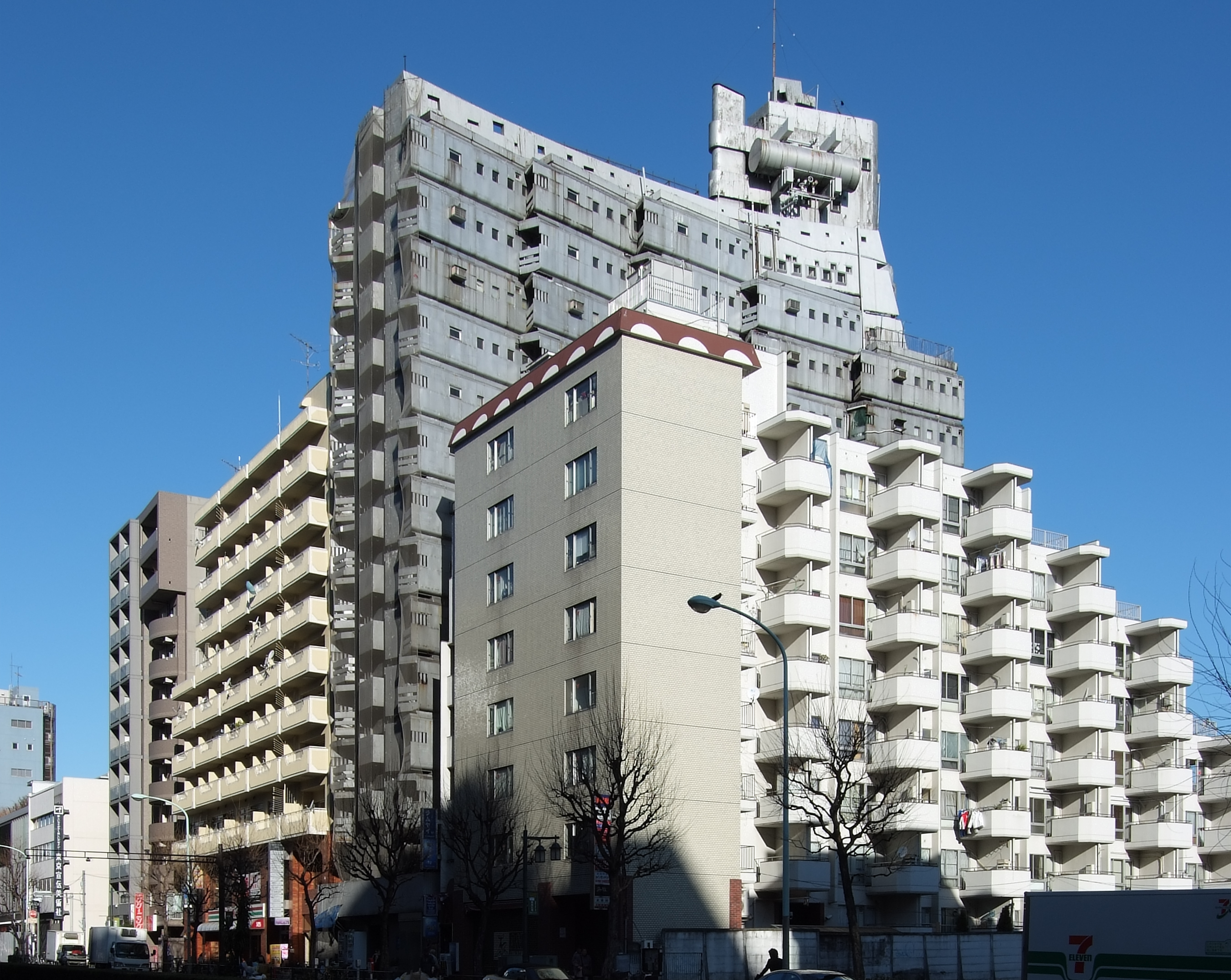Metabolism in architecture
Metabolism was a form of radical architecture that developed in Japan during the 1960s.
Presented with the opportunities of post-war rebuilding as a result of the devastation caused by the 1945 atomic bombs, designers and architects began to put into practice alternative theories and ideas for how cities should be designed.
Metabolism represented an urban environment that was responsive, replaceable and could grow in an organic way. It largely followed the ‘megastructure’ form that was gaining in popularity with architects and planners at the time, as a means of addressing the growing populations of urban areas and the rapidly-changing lifestyles of the post-war era. The principles of the megastructure were that it had to be modular, capable of extension and have a framework into which smaller elements could be ‘plugged’ or replaced.
The Japanese Metabolists were particularly inspired by University of East Anglia’s ‘Ziggurats’, as well as by Moshe Safdie’s Habitat 67 in Montreal. Although many projects failed to get off the ground, texamples of the Metabolist form include the battleship-esque New Sky Building in Shinjuku (see image above) and the Nakagin Capsule Tower, Tokyo by Kisho Kurokawa.
[edit] Related articles on Designing Buildings Wiki
- Architectural styles.
- Art Moderne.
- Blobitecture.
- Brutalism.
- Buckminster Fuller.
- Constructivist architecture.
- Deconstructivism.
- Frei Otto.
- Fuji TV Building, Tokyo.
- Geodesic dome.
- Habitat 67.
- High-tech architecture.
- Last Futures: Nature, Technology and the End of Architecture.
- Lloyds of London.
- Megastructure.
- Nakagin Capsule Tower.
- Neo-futurism.
- Norfolk Terrace and Suffolk Terrace - ‘the Ziggurats’.
- Robot Building, Bangkok.
- The Japanese House: Architecture and Life after 1945.
- Unusual building design of the week.
- Urban design.
[edit] External references
- ‘Last Futures: Nature, Technology and the End of Architecture’, MURPHY D., Verso Books (2015).
Featured articles and news
RTPI leader to become new CIOB Chief Executive Officer
Dr Victoria Hills MRTPI, FICE to take over after Caroline Gumble’s departure.
Social and affordable housing, a long term plan for delivery
The “Delivering a Decade of Renewal for Social and Affordable Housing” strategy sets out future path.
A change to adoptive architecture
Effects of global weather warming on architectural detailing, material choice and human interaction.
The proposed publicly owned and backed subsidiary of Homes England, to facilitate new homes.
How big is the problem and what can we do to mitigate the effects?
Overheating guidance and tools for building designers
A number of cool guides to help with the heat.
The UK's Modern Industrial Strategy: A 10 year plan
Previous consultation criticism, current key elements and general support with some persisting reservations.
Building Safety Regulator reforms
New roles, new staff and a new fast track service pave the way for a single construction regulator.
Architectural Technologist CPDs and Communications
CIAT CPD… and how you can do it!
Cooling centres and cool spaces
Managing extreme heat in cities by directing the public to places for heat stress relief and water sources.
Winter gardens: A brief history and warm variations
Extending the season with glass in different forms and terms.
Restoring Great Yarmouth's Winter Gardens
Transforming one of the least sustainable constructions imaginable.
Construction Skills Mission Board launch sector drive
Newly formed government and industry collaboration set strategy for recruiting an additional 100,000 construction workers a year.
New Architects Code comes into effect in September 2025
ARB Architects Code of Conduct and Practice available with ongoing consultation regarding guidance.
Welsh Skills Body (Medr) launches ambitious plan
The new skills body brings together funding and regulation of tertiary education and research for the devolved nation.
Paul Gandy FCIOB announced as next CIOB President
Former Tilbury Douglas CEO takes helm.
UK Infrastructure: A 10 Year Strategy. In brief with reactions
With the National Infrastructure and Service Transformation Authority (NISTA).























